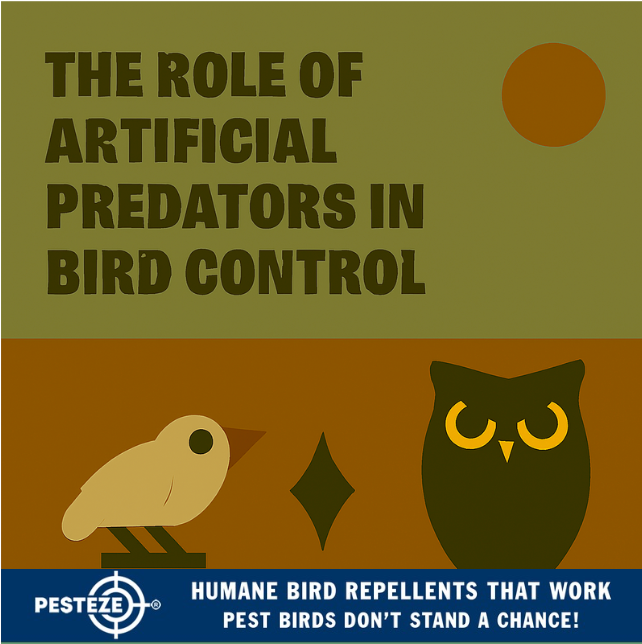THE ROLE OF ARTIFICIAL PREDATORS IN BIRD CONTROL

THE ROLE OF ARTIFICIAL PREDATORS IN BIRD CONTROL
SUMMARY
Artificial predator technologies offer sophisticated, non-invasive approaches to managing bird populations through advanced behavioral deterrence strategies in 2025.
FEATURES
- Ecological Management: Comprehensive strategies using advanced predator-based bird control.
- Non-Harmful Deterrence: Methods that protect wildlife while preventing property damage.
- Behavioral Science: Techniques that leverage bird predator avoidance mechanisms.
- Technological Innovation: Advanced solutions for creating bird-resistant environments.
- Adaptive Strategies: Approaches that address multiple bird species and environmental contexts.
GUIDE DESCRIPTION
Artificial predator technologies represent a sophisticated scientific approach to bird control that goes beyond traditional deterrence methods. The complex interactions between simulated predator stimuli and bird behavioral mechanisms create powerful psychological barriers that discourage bird populations without causing physical harm.
Scientific research reveals the nuanced ways birds respond to predator-related stimuli. Different species demonstrate unique threat perception mechanisms, creating opportunities for targeted, species-specific behavioral modification strategies that leverage advanced technological approaches.
Technological innovations in 2025 provide advanced capabilities for developing specialized artificial predator bird control technologies. Sophisticated biomimetic engineering, intelligent behavioral simulation systems, and comprehensive tracking technologies create unprecedented opportunities for wildlife management.
Professional wildlife management demands comprehensive approaches that consider multiple predator-related interaction mechanisms. Understanding how different bird species perceive and respond to predator signals becomes essential for developing effective deterrence strategies.
Strategic artificial predator deployment creates multiple complex interactions with bird populations. Carefully engineered visual, auditory, and movement-based predator simulations trigger sophisticated behavioral modifications that protect various environmental spaces while maintaining ecological balance.
- Pukhraj Sharma


Comments 0